- Home
- Linda Castillo
Fallen Page 9
Fallen Read online
Page 9
Her heart pounded so hard she could barely hear his voice over the roar. Her throat was tight and so dry she almost couldn’t get the words out. “She didn’t tell me anything.”
“I didn’t think so.” His eyes drifted to the girl in the back seat, then back to hers. “I’d hate to see something bad happen to you or, God forbid, your kid.”
“Please,” Loretta whispered.
Grinning, he released the lines and stepped away from the buggy. “You ladies be careful out there.”
Loretta’s hands were shaking so violently, she could barely snap the lines. “Kumma druff!” Come on now.
The horse startled and launched into a trot.
Loretta felt his eyes on her as she maneuvered the horse around his vehicle. She didn’t dare look at him as she passed him, but she felt the threat.
CHAPTER 14
It’s ten A.M. when I park outside the emergency room portico of Pomerene Hospital in Millersburg and take the sidewalk to the double glass doors. The volunteer at the reception desk waves as I cross to the elevator and punch the button. I return the greeting, but my smile feels grim. When the doors swish closed, I slide the tube of Blistex from my pocket and smear a dollop beneath my nose. By the time the doors open, I’m shored up and ready to face what comes next.
The reception area is nicely furnished with light blue walls, gray carpet, a pretty cherrywood desk, and a scattering of brightly patterned chairs.
“Hi, Chief Burkholder.”
Carmen Anderson has worked in an administrative capacity for Doc Coblentz for several years now. She’s professional, good at what she does, and cheerful despite the fact that she spends much of her day in such close proximity to the dead. This morning, she’s wearing a floral wraparound dress with a red belt, black blazer, and not-quite-sensible pumps.
“Hi.” I stop at her desk and sign in. “You know you’re one of the best-dressed women in Painters Mill, right?”
Her smile is dazzling. “Why thank you, Chief.” She chuckles. “I don’t get many compliments down here.”
We share a laugh as I set down the pen. “Doc in?”
“He’s expecting you.” She stands and motions toward the doors at the end of the hall marked MORGUE AUTHORIZED PERSONNEL.
I don’t let myself think about my purpose here, focusing instead on the questions roiling in my head as I tread down the hall and push open the door. The autopsy room is straight ahead, along with the alcove where the biohazard supplies are stored for visiting officials. To my left, I see Doc Coblentz’s glassed-in office. The miniblinds are open. The doctor is sitting at his cherrywood desk, a wrapper containing what looks like the remains of a fast-food breakfast on the blotter in front of him next to a to-go cup of coffee.
I’ve known Doc since becoming chief. He’s one of five doctors in Painters Mill, and assumes the responsibilities of coroner on an as-needed basis, which isn’t often. On those occasions when he is called upon, he tackles his duty with compassion and professionalism. His is a tough position fraught with high emotion and a drop-everything-and-get-it-done timeline. There’s no room for error—and invariably some cop or lab hounding him for results. Doc’s a laid-back individual with an inhuman work ethic and the curiosity of a scientist, both of which make him very good at what he does. Somehow, he manages to remain an optimist.
Setting down the coffee cup, he looks at me over the rims of his glasses. “I know you’re in a hurry to get to the bottom of what happened to that young woman, so I cleared my schedule. I’m planning to do the autopsy this morning.”
“Time and manner would be a big help,” I tell him.
“Figured as much. I’ve got some preliminary observations you might find useful.” Rising, he motions toward the alcove outside his office. “Shall we?”
I go to the alcove where Carmen has laid out an individually wrapped gown, disposable shoe covers, hair cap, face mask, and gloves. Doc waits in the hall while I gear up.
“You guys have any leads?” he asks.
“Not yet.” I slide the covers over my shoes, tie the gown strings haphazardly, and step into the hall.
“You knew the victim?” Doc says.
I wonder how he knows that, if he heard it from someone or if I gave him some indication while we were at the scene yesterday. “Years ago.” I say the words with calculated detachment, but I don’t meet his gaze. I remind myself that this is not about me or my emotions. This is about Rachael Schwartz, the family that mourns her, the community that will bear the scar of her death, and the bastard who killed her.
“Tough when it hits close to home,” he says.
“She was Amish,” I say, keeping my answer as vague and impersonal as possible.
He makes a sound of understanding. “You make the notification?”
I nod, thinking of Rhoda and Dan, and I do my best to ignore the knot of discomfort that’s tight and hard in my gut.
“A lot of people wonder how I do what I do. You know, autopsies and the like, dealing with the dead. Most are too polite to ask, but I see the questions. The truth of the matter is it’s not as difficult as they think. It’s not the dead who hurt. Their suffering is done.”
I finally meet his gaze. “I guess we, the living, have the market cornered on that, don’t we?”
His mouth pulls into a smile. “Precisely.” He motions toward the double doors at the end of the hall. “Let’s see what we can do to set you on track to get some justice for this young woman.”
I’m aware of the buzz of the lights as I take the hall toward the doors. The only sound comes from the rustle of our protective clothing, the voice in my head telling me I’m a fool for being here when I could be knocking on doors and doing my job. But this is part of it and I’ve no intention of not following through. Not now. Not the next time or the next. Macabre as this pilgrimage is, it is my ritual. For better or worse, it is my introduction to the victim. I need to see her not as the girl I’d once known, but the woman whose life was cut short. It brings me one step closer to knowing her. Understanding what happened to her. It is my burden to bear. My tribute to the victim. To the family. If I’m lucky, it will bring me one step closer to getting inside the mind of a killer.
The autopsy room is too bright, the lights buzzing. Floor-to-ceiling subway tile covers the walls. Ahead, a stainless-steel gurney is draped with a sheet.
“I did a preliminary exam and went over every inch of her with a fine-tooth comb. I took samples and scrapings, took the requisite photos. Pulled blood and urine for a full tox screen. We couriered everything to the police lab in London, including the clothes she was wearing at the time of her death. This morning, my technician cleaned her up. For obvious reasons, I took a CT scan and X-rays.” The doctor sighs. “I’ve seen a lot of injuries, a lot of deaths. Motor vehicle accidents. Farming mishaps. You name it. This woman suffered a tremendous amount of physical injury.”
I resist the urge to shudder. “Says something about the killer,” I say.
“That’s your forte, not mine. Thank God for that.” He shuffles to a clipboard hanging on the wall, flips the page, makes a note. “The victim arrived here at the morgue at four twelve P.M. Core body temperature was taken at four forty-six.” He flips another page and frowns, mumbling. “Heat is lost at about one point five degrees per hour. Liver temp was seventy-seven point six.” He turns to me. “My best estimation is that she died sometime between one and three A.M.”
He rehangs the clipboard and crosses to me, looks at me over the tops of his bifocals. I look back, trying not to acknowledge the compassion I see in his eyes, not only for the woman lying on the gurney, but for me.
“You sure you’re up to this?” he asks.
“You know I’m not going to give you a straight answer, right?”
His smile is subdued. “If it makes you feel any better, your aversion to all of this isn’t necessarily a bad thing. Means you’re human.”
He peels away the sheet cover.
For an instan
t, I struggle to make sense of what I’m seeing. Too many stimuli hit my brain at once. I see white skin marred with the blue-black bruising of livor mortis. Breasts drooping to each side of a rib cage that isn’t quite symmetrical. Hip bones and a flat belly with the silver pinpoint of a piercing at the navel. The dark triangle of hair at her pubis. Bare feet that are somehow undamaged. It’s the pink polish on the toenails that turns me inside out and rouses the stir of outrage. And for the hundredth time I’m reminded that just a day and a half ago this young woman cared about such trivial, everyday things as a pedicure. She painted her nails and put on makeup. She went shopping and combed her hair. She laughed and breathed and touched the lives of the people around her. I take all of it in, the broken heap of what’s left, and for an instant I’m frightened in some base and primal way.
A paper sheet covers the victim’s head, a quarter-size stain of watery pink blood warning me that I don’t want the doc to pull it away. The ends of damp blond hair stick to the stainless steel.
Then my cop’s brain clicks into gear; the questions begin to boil, part habit, partly the side of me that wants to catch the sick fucker that did this to her. “Cause of death?”
“Preliminarily speaking, she likely died of nonpenetrating trauma. Of course, I won’t officially rule on cause or manner until I’ve completed the autopsy.” He shakes his head. “To be perfectly honest, Kate, the injuries are simply too numerous to quantify. Several of these injuries could have been fatal on their own. All of that said, I do have some specifics and the postmortem CT scan will help us break it down.”
Reaching up, he angles the reflective overhead light. I’m aware of my heart thrumming against my ribs. The heat of the light. The hum of something unseen on the other side of the room.
Doc Coblentz pulls away the paper covering the victim’s head. I see damp blond hair. The gaping red mouth of a scalp wound. A forehead that’s been laid open to the bone. A cheek that’s caved in. Her left eye bulges from its socket, unseeing and dull. Mouth open, tongue bulging. Front teeth missing. Her chin is simply … gone.
Something unpleasant jumps in my chest. I think of the little girl I used to babysit. The one that was loud and bold and challenged my authority. The one that liked to run and laugh and pick on the other kids …
“In looking at the CT scan,” the doc begins, “I counted six impact sites on the skull alone. There are multiple cranial-bone fractures. Fracture of the occipital bone. Subdural and subarachnoid hemorrhages. The areas affected include the frontal, parietal, and temporal regions.”
“Do you have any idea what the murder weapon was?” I ask.
He shakes his head. “I may be able to come up with a theory once I’m able to look at the CT scan and take some measurements. If we’re lucky, the scrapings I sent to the lab will come back with some foreign material that will tell us. Something like a flake of rust from a steel pipe. Wood splinters from a club or board. Something like that. At this point, I do not know.”
I’m looking at the doc. He’s staring back at me, uncertain, waiting. I force my eyes back to the victim. Calmer, I start to notice details I missed at first glance. Her right hand is purple. Her fingers twisted into unnatural shapes. The right side of her rib cage is misshapen, the ribs obviously broken.
“What about the rest of her?” I ask.
“Whoever did this struck her with indiscriminate brutality. Head. Body. Whatever he could reach. It was likely a frenzied attack.” Using a swab, he indicates the swollen hand. “The middle phalanx on the right hand is fractured. Probably a defensive wound.”
“She tried to protect herself,” I say.
He nods. “Ulna is fractured.” He shifts the swab from her forearm to her shoulder. “Clavicular fracture. Sternal fracture. Scapular fracture. Ribs four through six are fractured. There are likely internal injuries of the lateral thoracic walls and posterior thorax as well.”
“Was there any indication of sexual assault?” I ask.
“There’s no trauma, but as a manner of routine I took vaginal and anal swabs which will tell us if there’s semen present.”
I nod, trying not to look at what remains of Rachael Schwartz, but unable to look away. “Did this attack require physical strength?”
“I can’t answer that definitively, but if I were to venture a guess, I would say a strong person did this. The magnitude of the force was considerable.”
“Was any of this done postmortem?”
“As you know, bruising ceases once the heart stops. There are at least two locations where bones were fractured and yet there was little in the way of bruising. I would venture to say the beating continued after she was deceased, at least for a short while.”
* * *
After leaving the morgue, I sit in the Explorer for several minutes, gathering the frayed edges of my composure, tucking them into some semblance of order, so I can get back to work. It’s not easy. When I close my eyes, I see the horrific injuries that were done to Rachael Schwartz. The gaping wounds and broken bones. In my mind’s eye, I see her as a nine-year-old Amish girl who smiled because I said something inappropriate. As a kid, Rachael wasn’t quite sweet. She wasn’t quite innocent. Charming, but not always genuine. If you were a parent, you were never quite sure if you wanted your own children to associate with her. But she loved life. She lived it to its fullest. Maybe with a little too much gusto—and, perhaps, at the expense of others. But she deserved the chance to live her life.
My face is hot, so I lower the window and force myself to listen to the call of a blue jay in the maple tree next to the parking lot. I focus on the breeze easing into the cab. I draw a deep breath, discern the smell of fresh-cut grass. The distant bark of a dog. After a few minutes, the jittery sensation in my stomach subsides. The darkness ebbs. My hands grow steady on the steering wheel. When I close my eyes, I recall everything I know about Rachael Schwartz not with the shock of a woman who is a little too close, but with the emotional distance of a cop determined to do her job.
Putting the Explorer in gear, I pull out of my parking spot and head toward Painters Mill.
CHAPTER 15
Summer 2008
The rager was in full swing when Loretta and Rachael arrived. Loretta had never seen so many people in one place. She sure as heck had never seen so many English cars. The pasture behind the barn had been transformed into a virtual parking lot, filled with as many cars and trucks as buggies. Two young Amish hostlers were carting around buckets and soliciting tips for watering the horses.
Levi parked his own buggy behind a pickup truck with giant tires and a big chrome tailpipe. Rachael was sitting next to Levi. Loretta was sitting on the outside seat and slid from the buggy the moment it came to a stop.
“Hold up.” Reaching into the back seat, Levi tore two more beers off a six-pack and handed them to Rachael, but his eyes were on Loretta. “One for the road.”
Grinning, Rachael took both cans and slid from the buggy without thanking him. “We need smokes, too, Amish boy.”
Mouth pulled into an assessing half smile, he fished the pack out of his pocket, tapped out two smokes, and handed them to her. “I’ll meet you back here in two hours,” he said.
“Three,” said Rachael.
Loretta elbowed her. “Two,” she whispered.
Rachael rolled her eyes. “Two and a half.”
Levi regarded them, his eyes lingering on Loretta a tad too long. “Don’t be late. I gotta work tomorrow.”
He secured the leather lines, then slid down from the buggy. Loretta watched as he handed a five-dollar bill to one of the hostlers. Relief slipped through her when he was finally gone.
“You’re frowning.”
Loretta turned to see her friend come up beside her. “I don’t like him.”
“Oh, Levi’s all right,” Rachael said. “He’s just … finding his way, I think.”
“He whips his horse too much,” Loretta said, motioning toward the whip sticking out of the holder attached to
the buggy. “Mamm told me the way people treat God’s creatures speaks to the way they deal with people.”
Two English boys, cans of Budweiser in hand, walked by. One of them, a tall boy with a scraggly beard and John Deere cap, turned and walked backward, his eyes on Rachael, and whistled.
Once they’d passed, Rachael looked at Loretta and they broke into laughter.
“Er is schnuck,” Rachael said. He’s cute.
Feeling frumpy, Loretta looked down at her dress. “I’m not sure I fit in here.”
“Hmmm.” Rachael studied her clothes for a moment. “I think we can fix that.”
“But Mamm will—”
“Never know.”
Taking Loretta’s hand, Rachael led her back to the buggy and they ducked into the shadows behind it, out of sight of the crowd. “Give me your halsduch,” she said, referring to the capelike feature draped over her dress.
“I don’t see how that’s going to help,” Loretta said.
Rachael held out her hand. “Trust me.”
Frowning, Loretta lifted the triangular piece of cloth over her head and handed it to her friend.
Rachael tossed the halsduch into the buggy. “Roll up your sleeves. To your elbows.” As Loretta obeyed, Rachael went to the buggy and returned with a box cutter.
“What’s that for?” Loretta asked.
“Hold still or I’ll cut your leg off.” Kneeling, she set to work at the hem. “It’s going to look great. You’ll see.”
Loretta closed her eyes tightly as her friend sawed at the fabric. She didn’t know if she was more excited—or terrified. The one thing she did know was that she was going to let her do it despite the possibility of her mamm finding out.
“All done.”
Loretta opened her eyes and looked down at her dress, mildly shocked by the sight of her knees. “Oh.”

 A Hero to Hold
A Hero to Hold A Whisper in the Dark
A Whisper in the Dark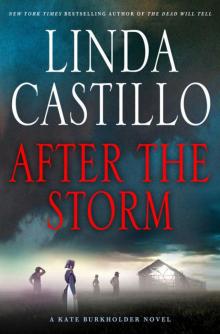 After the Storm
After the Storm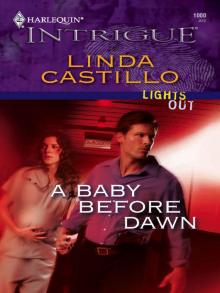 A Baby Before Dawn
A Baby Before Dawn Breaking Silence
Breaking Silence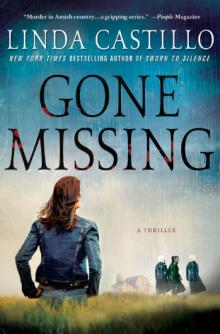 Gone Missing
Gone Missing Long Lost
Long Lost Midnight Run
Midnight Run The Dead Will Tell
The Dead Will Tell Sworn to Silence
Sworn to Silence Lay Down the Law
Lay Down the Law Safe Before Dawn
Safe Before Dawn Depth Perception
Depth Perception Seeds of Deception
Seeds of Deception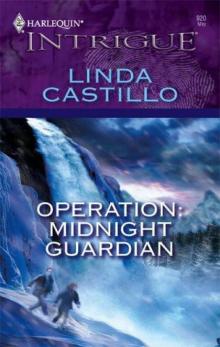 Operation: Midnight Guardian
Operation: Midnight Guardian The Perfect Victim
The Perfect Victim Operation: Midnight Tango
Operation: Midnight Tango In Plain Sight (Kate Burkholder)
In Plain Sight (Kate Burkholder) Shamed
Shamed Fallen
Fallen Her Last Breath
Her Last Breath Remember the Night (Men in Blue)
Remember the Night (Men in Blue) Dead Reckoning
Dead Reckoning Cops and ... Lovers?
Cops and ... Lovers? The Pact
The Pact A Simple Murder
A Simple Murder Among the Wicked
Among the Wicked In the Dead of Night
In the Dead of Night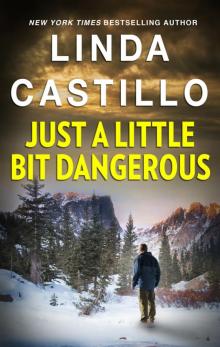 Just a Little Bit Dangerous
Just a Little Bit Dangerous The Phoenix Encounter
The Phoenix Encounter In Dark Company
In Dark Company Pray for Silence
Pray for Silence Kate Burkholder 01-Sworn to Silence
Kate Burkholder 01-Sworn to Silence Remember the Night
Remember the Night Operation: Midnight Rendezvous
Operation: Midnight Rendezvous Operation: Midnight Escape
Operation: Midnight Escape The Dead Will Tell: A Kate Burkholder Novel
The Dead Will Tell: A Kate Burkholder Novel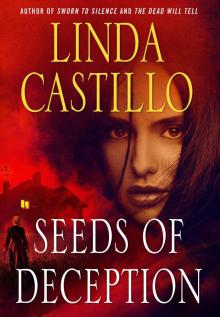 Seeds of Deception: A Kate Burkholder Short Story
Seeds of Deception: A Kate Burkholder Short Story Gone Missing (Kate Burkholder 4) kb-4
Gone Missing (Kate Burkholder 4) kb-4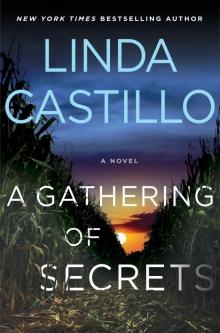 A Gathering of Secrets
A Gathering of Secrets Seeds of Deception: A Kate Burkholder Short Story (Kindle Single)
Seeds of Deception: A Kate Burkholder Short Story (Kindle Single) Pray for Silence kb-2
Pray for Silence kb-2 Operation: Midnight Cowboy
Operation: Midnight Cowboy In Dark Company_A Kate Burkholder Short Mystery
In Dark Company_A Kate Burkholder Short Mystery Sworn to Silence kb-1
Sworn to Silence kb-1 Her Last Breath: A Kate Burkholder Novel
Her Last Breath: A Kate Burkholder Novel Among the Wicked: A Kate Burkholder Novel
Among the Wicked: A Kate Burkholder Novel Breaking Silence kb-3
Breaking Silence kb-3 Kate Burkholder 2 - Pray for Silence
Kate Burkholder 2 - Pray for Silence Long Lost: A Kate Burkholder Short Story
Long Lost: A Kate Burkholder Short Story